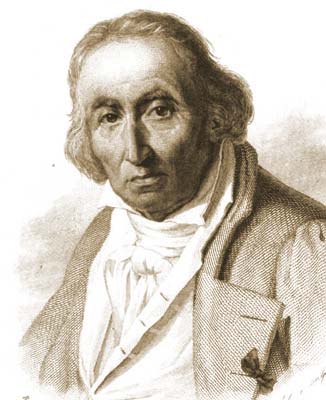
In general the following information is given: “1805 Patent on pattern weaving machine with punched cards by Joseph-Marie Charles Jacquard”.
Jacquard may have been the first inventor able to file for a patent, yet the technology of a fully automated loom driven by punched cards was not actually his invention. This fact was brought to our attention by a Canadian reader, Dr. Luc Rolland, a scientist by trade and a professor at the High Performance Robotics Laboratory of the Memorial University of Newfoundland, St. John’s.
The first endeavours to develop a control system using punched tape, based on the mechanisms of music automata, were made in the early 18th century. Basile Bou¬chon, who worked at one of the Lyon silk centres, used this system in 1725 to create a semi-automated alternative to the draw loom. His assistant, Jean-Baptiste Falcon, improved the invention in 1728, adding further improvements at a later stage (1762) to create a fully automated loom, although only some 40 such devices were sold at the time (http://history-computer.com/Dreamers/Bouchon.html).
Another inventor, Jacques Vau¬canson (1707-1782), was given a studio of his own in Lyon at the age of 18 where he conducted extensive studies into mechanical automata which were en vogue at the time. In 1741 he was charged with developing new weaving devices because the French textile industry had fallen behind that of England. Between 1745 and 1750, Vaucanson made further improvements to the loom created by his predecessors, developing the world’s first fully automated loom. Local weavers fought this new invention fiercely, leading to unrest in Lyon (http://history-computer.com/Dreamers/Vaucanson.html).
It was not until 1805 that Jacquard dared to go public by filing his application for a patent. Psychological or social reasons as well as the wish to retain politi¬cal power are often to blame for the failure to accept a reality, or to accept it only after a long delay.